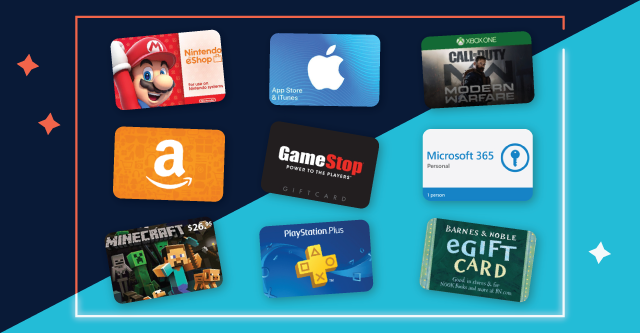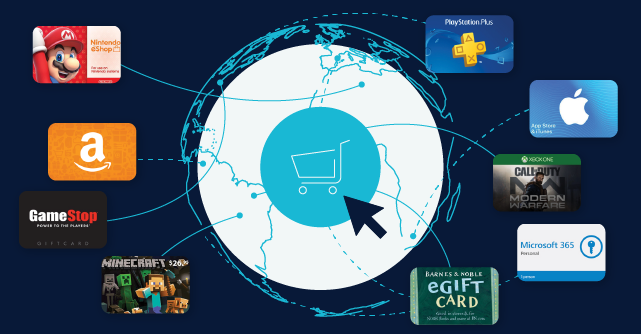Throughout history, the act of giving has been a fundamental component of societies and economies around the world. Today, the humble gift card embodies the spirit of the online gift-giving economy.
In the digital gift card economy, gift cards are the currency of the act of gifting, be it in pure gifting form or as a transactional transfer of value. Nowadays, gift cards’ portability, value, and ease of use make them a top choice for gift-givers and recipients, with 83% of consumers willing to hand friends gift cards over physical gifts, according to a survey by Blackhawk in 2021. However, it wasn’t always this way: About 15 years ago, gift cards were seen as highly inefficient, a reality that has now been reshaped by Covid-19, mobile phone ubiquity, and changing online shopping behavior.
In hindsight, gift cards were never going anywhere. Beyond the ease of use and digital delivery, online gift cards continue to fulfill the human essence of gift exchanges in a digital world.
Sociologists and anthropologists have studied gift exchange over the years, and the work of Marcel Mauss in 1925 provides unique insight into why we exchange gifts. In his work titled “The Gift: The form and reason for exchange in archaic societies”, gift-giving satisfies three primal human obligations: giving, to build social relationships; receiving, in acceptance of the social relationship; and reciprocity, to establish the recipient’s integrity.
Giving the right gift to the right person at the right time can thus strengthen relationships on a very basic human level, just as giving the wrong gift can ruin it.
So, naturally, people tend to put more thought into giving the appropriate gifts, and gift cards provide a medium for giving meaningful gifts based on the recipient’s age, status, and preferences.
In today’s digital landscape, this natural human tendency is supported by the variety of gift cards that exist, further helping gifters deliver personalized gifts suited to the recipient’s desires.
Going forward, the digital gift card economy will thrive as it continues to fulfill our basic needs to celebrate and share. From holiday gifts to charity giving, gift cards can be the ideal gift to receive, but the gift card economy has come a long way to becoming more accepted in recent years, especially as human interactions have become more digital and purchases pushed increasing to online transactions.
[Looking for a way to better empower and enable the sending of global gift cards? Contact us to learn about the Reloadly gift card API, easy to integrate without signing up for any contract.]
The Gift Card Economy: Transitioning from inefficiency
The first gift card was created in 1994, and many other brands entered the market in the early 2000s. As with every innovation, the early days of the gift card were inefficient.
Gift card fraud hampered the industry, but a more glaring issue was that a majority of people did not use the gift cards they received. A piece published in the New York Times in 2007 stated that of the $80 billion expended on gift cards in 2006, about $8 billion went unredeemed. With about 10% of gift cards left unredeemed in 2007 – although a significant improvement from the 19% in 2005 – a question loomed: are gift cards an ideal method to transfer the value of gifts?
In 2007, most economists believed that gift cards were poor gifts. With the high rate of unclaimed gift cards, it appeared that gift cards were gifts for the issuing company – they earned most of the money back as “breakage,” or gift cards bought but reclaimed by the issuing companies. Brand gift cards also resulted in upsells to the companies, making it a double-win for them.
Not only did breakage contribute to $8 billion in unclaimed cash, but all of that money went back to the gift card companies, according to TowerGroup, a financial services research firm,
According to the writers of the 2005 NY times article, sending gift cards are so easy to give to by givers as they require little to no thought.
In the view of the writers, Stephen Dubner and Steven Levitt, the duo made famous by their Freakonomics series of books, a gift that is easy and great for the giver is likely a poor gift to the recipient. Gift cards required little or no thought on the path of the buyer, and that reduced the value of gift cards substantially.
Also, just like with other types of gifts often received during holidays, gift cards were often a mismatch with the recipient’s desire. While the gift receiver knows what he/she would love to receive, the person giving the gift most likely does not (and won’t ask.)
This is where the gift card economy began to run into some bumps along the way. However, the e-commerce and digital revolutions have since transformed how people react to receiving gift cards.
The Evolution of the Gift Card Economy

The gift card economy has evolved by leaps and bounds since its early days. The current industry projection is that gift cards will be worth $440.7 billion by the end of 2027 with a CAGR of 8.8%, an astronomical growth rate that will be supported by more key players emerging in the sector.
Gift card adoption is being propelled by the choices available, the ubiquity of mobile phones to make transfers, its use as an alternative means of payment, and overall fungibility. With digital gift cards, more people can share gift cards across borders and spend them from anywhere, as long as they have an internet-enabled device.
Thus, more people are getting gift cards not only for family and friends, but for themselves.
The utility of gift cards also means that they remain a top option for gifters, but also for recipients. While the Freakonomics economists in the 2000s opined that gift cards were an afterthought-type-of-gift from givers, recent trends and statistics have shown otherwise.
Now let’s see just how this revolution is unfolding.
Trends and Figures: How the Gift Card Economy Has Become an Exchange of True Value
More easily than before, gift cards satisfy the requisite conditions for a quality gift, which can be distilled into two elements: it is appropriate, and the recipient values it.
Today, in the midst of e-commerce and mobile revolutions, more people are open to receiving and giving gift cards for the following reasons.
1. Gift card purchases are now properly planned
As stated earlier, it is believed that a gift so easily given is fundamentally flawed. However, today gift cards are not given merely because of the little planning required.
According to a 2020 report by Incomm on Gift Cards, 86% of US gift card purchases are planned, and correspondingly, 55.8% of recipients of gift cards state that they received gift cards for brands they liked.
2. The spending flexibility and choice for gift cards is limitless
Gift cards can be open-loop or closed loop. Open-loop gift cards can be spent anywhere debit or credit cards are accepted, and they can be spent on a broad range of categories: fashion, health, beauty, bill payment, and online shopping.
Closed-loop gift cards are brand-restricted, but that remains little impediment as 78.7% of people utilize gift cards from unfamiliar brands, and 87.7% have a tendency to visit them afterward.
The versatility of gift cards makes them a popular gift idea, and more people today would likely appreciate receiving a gift card from the brand they love.
3. Gift card purchases for oneself
More individuals purchase gift cards for themselves than did a decade ago. In 2019, 33% of gift cards purchased were for the owners, according to research by the Black Hawk Network, with 66% of them being digital gift cards.
Individuals purchase gift cards for themselves for four major reasons:
- Ease of purchase and spending online or in physical stores
- The safety of gift cards
- Financial prudence and budgeting
- As an alternative payment
4. Covid-19 propelled digital gift card adoption
According to a 2021 survey by Payments EQ, 43% of people started or increased their use of digital cards during the Covid-19 pandemic. The survey also revealed that 32% of the people surveyed planned to use gift cards to purchase other holiday treats.
The adoption of digital gift cards was largely instigated by stay-at-home orders as a result of the Covid-19 pandemic, and its adoption by businesses is projected to increase by 23% by 2025.
5. The number of unused gift cards drop yearly
The biggest problem with gift cards in their early stages was that a huge proportion of gift cards went unused. Today, this remains a problem, but the number of gift cards that go unused drops by 25% annually, according to Bankrate.
Why Businesses Should Venture into the Gift Card Economy
More businesses venture into providing gift cards today because of increased consumer demands and related changes to online shopping behavior.
By offering gift cards, brands can expand their profit margins by:
- Using gift cards to increase brand engagement and sales via gift card marketing strategies and promotional campaigns
- Expanding into new ecosystems and propelling API innovation
- Targeting new consumer segments
- Offering digital gift card services
Businesses looking to offer digital gift card services can build a solution that is as in-demand for its utility as well as its gifting value.
Your company’s developers can do this by utilizing a gift card API that enables them to allow consumers to purchase, redeem and send gift cards.
An ideal gift card API should enable swift integration of a gift card service into your business. Beyond that, it should offer a variety of options that serve varying needs, cut across various brands, and offer trackable deliveries globally.
Lastly, it should be innovation-friendly and value-driven, so developers can build upon it to provide unique offerings.
Final thoughts
The Reloadly gift card API is an easy way to offer the fast global transfer and purchase of gift cards that fulfill the needs of your business and consumers.
If you are interested in securing your stake in the gift card economy today, our support team is at hand to get you started.



